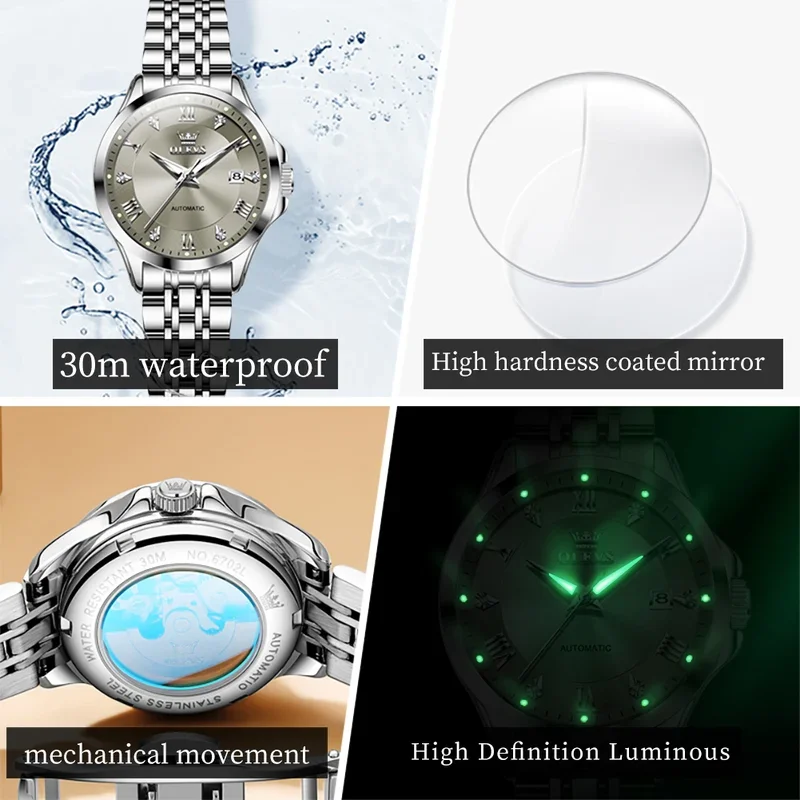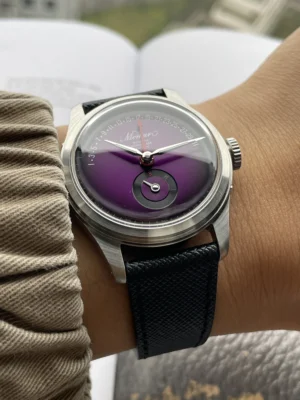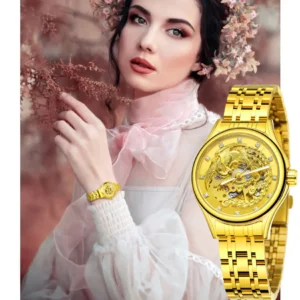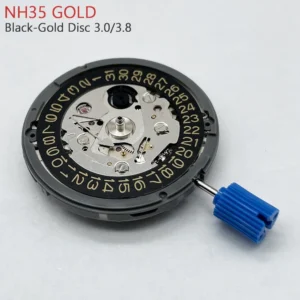The Celestial Timekeeper: Understanding the Moonphase Watch
For thousands of years, humans have gazed at the night sky, tracking the moon’s journey across the heavens. This celestial dance, once crucial for agriculture, navigation, and cultural rituals, continues to fascinate us even in our modern world.
A moonphase watch captures this ancient fascination in mechanical form. At its core, a moonphase watch is a timepiece equipped with a special complication that tracks and displays the current phase of the lunar cycle on your wrist. It bridges the gap between traditional astronomy and the art of watchmaking, creating a connection between the wearer and the cosmos.
This blend of practical timekeeping and celestial tracking represents one of horology’s most poetic expressions. The history of dive watch engineering shares similar roots in functional necessity evolving into artistic expression, much like moonphase timepieces.
Throughout human history, we’ve created increasingly sophisticated tools to track the moon’s 29.5-day journey from new moon to full moon and back again. Today’s moonphase automatic watches carry this tradition forward with remarkable precision and beauty.
But how exactly do these miniature mechanical wonders replicate the moon’s dance across the sky? Let’s explore the fascinating mechanics behind these celestial timekeepers.
The Lunar Cycle: What Your Moonphase Watch Actually Tracks
Your moonphase watch tracks the synodic lunar month—the time it takes for the moon to complete its cycle of phases as seen from Earth. This cycle spans 29.53 days (29 days, 12 hours, and 44 minutes), slightly shorter than most calendar months.
The principal moon phases your watch typically tracks include:
- New Moon: When the moon is positioned between Earth and the sun, with its dark side facing us
- Waxing Crescent: The first visible sliver appears as the moon begins to grow
- First Quarter: The right half of the moon is visible
- Waxing Gibbous: More than half but less than full moon is visible
- Full Moon: The entire face of the moon is illuminated
- Waning Gibbous: The visible portion begins to decrease
- Last Quarter: The left half of the moon is visible
- Waning Crescent: The final sliver before returning to new moon
This natural cycle doesn’t align neatly with our calendar system, which presents an interesting challenge for watchmakers. The discrepancy between the lunar cycle and calendar months is precisely what makes moonphase complications a testament to horological ingenuity.
Understanding how moonphase watches track lunar cycles gives you greater appreciation for the mechanical artistry on your wrist—a miniature astronomical computer that connects you to the same celestial rhythms our ancestors observed millennia ago.
Inside the Movement: How Moonphase Complications Work
The magic of a moonphase watch lies in its ingenious mechanical solution to track the moon’s 29.53-day cycle. Let’s peek beneath the dial to understand how this celestial dance is miniaturized.
The Standard 59-Tooth Mechanism
The most common moonphase mechanism employs a 59-tooth wheel that advances one tooth per day. Why 59 teeth rather than the expected 29.53? Because this wheel controls a disc with two identical moon images. As this wheel completes half a rotation (29.5 teeth), one complete lunar cycle is displayed in the watch’s aperture.
This clever design creates an approximation of the lunar cycle at 29.5 days—just slightly off from the actual 29.53-day cycle. This small difference means standard moonphase watches accumulate an error of one day every 2.5 years, requiring occasional adjustment.
Astronomical Precision
For those seeking greater accuracy, high-end watchmakers offer astronomical moonphase complications using 135-tooth systems. These refined mechanisms reduce the error rate dramatically to just one day every 122 years—a remarkable achievement in mechanical engineering.
These complications are often found in perpetual calendar automatic watches, which handle month lengths and leap years without adjustment.
The Mechanical Drive
The moonphase disc is typically driven by the watch’s main timekeeping gear train. A mechanical finger advances the moonphase wheel by one tooth each day, usually around midnight when the date changes. This system ensures the moonphase display stays synchronized with the passage of time, provided the watch remains running.
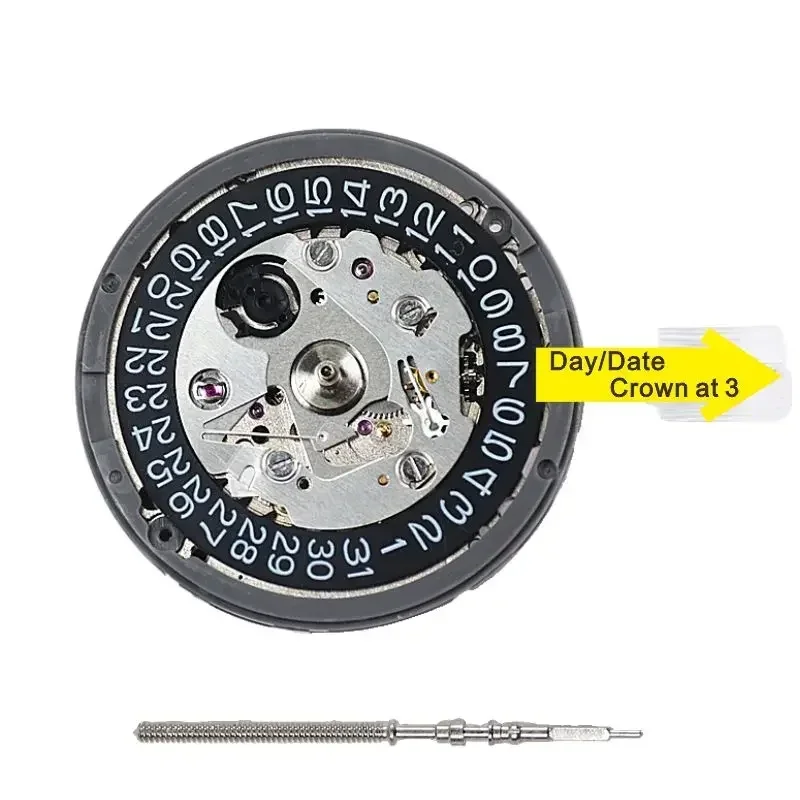
Visual Poetry: Types of Moonphase Displays
The technical achievement of tracking lunar cycles mechanically is matched by the artistic expression of how these phases are displayed on a watch dial. Watchmakers have developed several distinctive approaches to visualizing the moon’s journey.
Traditional Bosom/Crescent Display
The most recognizable moonphase display features a small aperture—often shaped like a crescent or arch—that reveals a rotating disc beneath. This disc typically shows two golden moons against a blue background representing the night sky. As the disc rotates, the moon appears to wax and wane within the window, mimicking its appearance in the night sky.
Radial Displays
Some watch designs opt for a more modern approach with a radial indicator. Instead of a rotating disc, these watches use a hand that points to the current moon phase on a scale around a portion of the dial. This creates a clean, instrument-like aesthetic while providing the same astronomical information.
Artistic Interpretations
Premium timepieces often feature stunningly realistic moon renderings with textured surfaces that capture lunar craters and terrain. Some artisans hand-paint these moons or use specialized techniques like grand feu enamel to create exceptional depth and detail.
Materials and Effects
For truly spectacular visual impact, many fine watchmakers use aventurine glass—a sparkling blue material with copper inclusions that mimic a starry night sky. This creates a striking backdrop for the moon display, adding another dimension of celestial beauty to the timepiece.
These artistic expressions share the decorative appeal found in open heart automatic watches, where mechanical beauty becomes a visual feature rather than something hidden beneath the dial.
From Celestial Necessity to Wrist Artistry: The Evolution of Moonphase Watches
The journey of moonphase displays from practical astronomical tools to wrist-worn art pieces reflects humanity’s evolving relationship with timekeeping itself.
Ancient civilizations relied on lunar cycles for agriculture, religious ceremonies, and navigation. Early astronomical clocks in medieval Europe began incorporating moon phase indicators to track these important cycles. These room-sized mechanisms were the technological marvels of their age, serving both practical and prestigious purposes.
As portable timekeeping developed, pocket watches began incorporating lunar displays for gentleman astronomers and navigators who needed this information while traveling. These early portable moonphase displays were primarily functional tools rather than decorative elements.
The transition from pocket to wristwatch in the early 20th century initially left little room for complications like moonphases, as watchmakers focused on miniaturizing basic timekeeping functions. However, by the 1920s and 1930s, as wristwatch technology matured, moonphase complications began appearing in prestigious timepieces once again.
The quartz crisis of the 1970s nearly eliminated mechanical watchmaking altogether, but the subsequent mechanical renaissance brought renewed appreciation for traditional complications. Today’s moonphase watches represent the pinnacle of this resurgence, celebrating horological tradition while incorporating modern manufacturing techniques.
This evolution mirrors the evolution of dive watch technology from pure utility to objects of desire and craftsmanship. The enduring allure of moonphase complications lies in their perfect balance of technical ingenuity and romantic connection to the cosmos.
Decoding Your Moonphase: How to Read and Set the Display
Understanding and properly setting your moonphase watch enhances both its accuracy and your enjoyment of this special complication.
Reading the Display
On traditional displays with a window aperture, the position of the moon image indicates the current phase. When the moon is centered in the window, it represents a full moon. When no moon is visible, it’s a new moon. The gradual appearance or disappearance of the moon within the window corresponds to waxing and waning phases.
For radial displays, simply note where the indicator hand points on the lunar scale to determine the current phase.
Setting Your Moonphase
To properly set your moonphase watch:
- First determine the current moon phase using a calendar, newspaper, or online resource
- Pull the crown to the moonphase setting position (consult your watch manual, as this varies by model)
- Rotate the crown to advance the moonphase display until it shows the current phase
- Push the crown back to its normal position
Important note: Many moonphase watches should not be adjusted during the “danger zone” hours (typically between 8 PM and 2 AM) when the date mechanism is engaged. Adjusting during this time could damage the movement.
For precise alignment, set your moonphase on the day of a full or new moon, as these phases are easiest to align accurately. Many watch enthusiasts find that understanding proper user guide procedures for setting day-date watches provides helpful context for working with moonphase mechanisms as well.
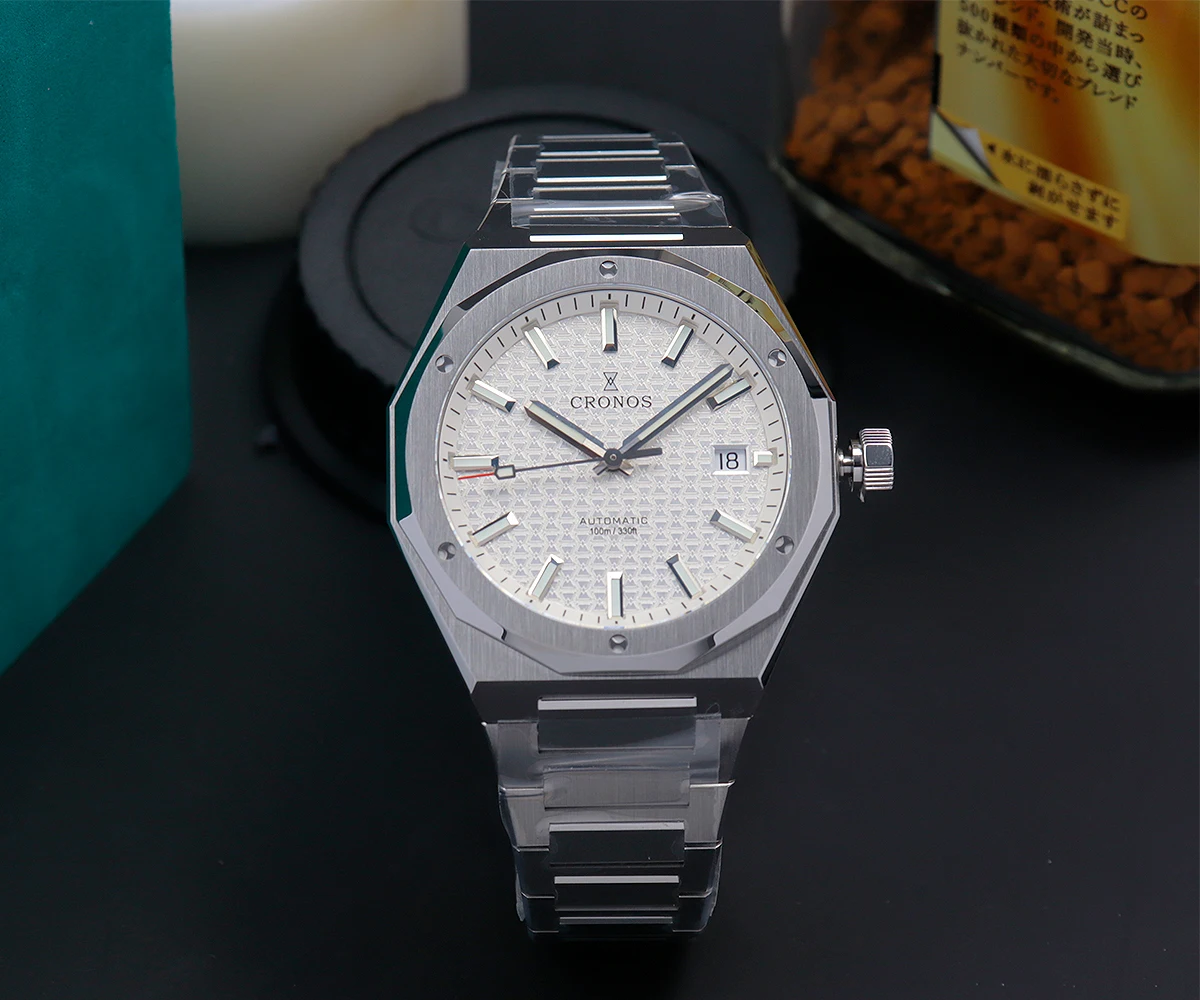
Accuracy and Maintenance: Caring for Your Moonphase Complication
The precision of your moonphase display depends primarily on its underlying mechanism, but proper care ensures it functions as designed for years to come.
Expected Accuracy
- Standard 59-tooth mechanisms: Requires adjustment approximately once every 2.5 years (error of one day)
- High-precision 135-tooth astronomical moonphases: Requires adjustment once every 122 years
- Ultra-high-precision mechanisms: Some exceptional watches achieve accuracy to one day in over 1,000 years
Maintenance Recommendations
- Keep your watch running if possible, as stopping requires resetting the moonphase
- If your watch does stop, reset the moonphase using a current lunar calendar
- Have your watch serviced by a qualified watchmaker at recommended intervals
- When storing long-term, set the watch to a new moon position to minimize stress on the mechanism
- Avoid changing the moonphase setting during the nighttime hours when the date mechanism is engaged
Like all mechanical watches, moonphase timepieces benefit from regular wear, as this keeps the lubricants properly distributed throughout the movement. Understanding how long automatic watches last with proper care applies equally to moonphase complications.
Beyond the Moon: Related Astronomical Complications
While moonphase displays capture our imagination, they’re just one expression of astronomical timekeeping in the watchmaking world. Several related complications expand on this celestial theme.
Day/Night Indicators
Often confused with moonphase displays, day/night indicators simply show whether it’s currently daytime or nighttime, typically using rotating discs with sun and moon symbols. Unlike true moonphase complications, they complete one full rotation every 24 hours and don’t track lunar cycles.
Calendar Complications
Moonphases frequently appear alongside various calendar functions, from simple date displays to complete perpetual calendars. The most sophisticated examples can account for varying month lengths and leap years without adjustment until the year 2100.
Advanced Astronomical Displays
For the ultimate celestial experience, some exceptional timepieces include:
- Equation of time: Shows the difference between apparent solar time and mean solar time
- Sidereal time: Tracks the Earth’s rotation relative to fixed stars rather than the sun
- Sunrise/sunset indicators: Display daily changing sunrise and sunset times for a specific location
- Star charts: Rotating displays showing visible constellations as they appear from the wearer’s location
These complications often work in concert with moonphases in grand complication timepieces, creating miniature astronomical observatories for the wrist.
For those interested in sophisticated calendar functions, day-date automatic watches offer an accessible entry point into the world of calendar complications.
Classic Automatic Dress Watches, Day Date Automatic Watches, Perpetual Calendar Automatic Watches
Price range: $540.60 through $574.60 Select options This product has multiple variants. The options may be chosen on the product pageAutomatic Skeleton Watches, Open Heart Automatic Watches
$98.36 Select options This product has multiple variants. The options may be chosen on the product pageDay Date Automatic Watches, Gold Tone Automatic Watches
$138.24 Select options This product has multiple variants. The options may be chosen on the product page- $480.96 Select options This product has multiple variants. The options may be chosen on the product page
Rugged Automatic Watches, Unique Automatic Watches
Price range: $228.96 through $231.10 Select options This product has multiple variants. The options may be chosen on the product pageGMT Automatic Watches, Unique Automatic Watches
$420.10 Select options This product has multiple variants. The options may be chosen on the product page
Selecting Your Moonphase Watch: Key Considerations
When choosing a moonphase watch, several factors can help guide your decision toward the perfect timepiece for your needs and preferences.
Mechanism Precision
Consider how important accuracy is to you:
* Standard 59-tooth mechanisms (requiring adjustment every few years) are found in most accessible moonphase watches
* High-precision astronomical moonphases command premium prices but offer remarkable accuracy
Display Style
The visual presentation of the moonphase varies widely:
* Traditional aperture displays with golden moons offer classic elegance
* Realistic moon renderings provide visual impact and astronomical detail
* Radial indicators offer a more contemporary, instrument-like aesthetic
* Aventurine or other special materials add luxury and visual depth
Additional Complications
Many moonphase watches include complementary features:
* Simple date displays pair naturally with moonphases
* Complete calendar functions (day, date, month) create a more comprehensive astronomical tool
* Perpetual calendars represent the pinnacle of calendar complications
Case Size and Wearability
Moonphase complications traditionally require space on the dial, often resulting in larger case sizes. However, modern manufacturing techniques have enabled more compact interpretations suitable for various wrist sizes.
Budget Considerations
Moonphase watches span a wide price range:
* Entry-level options typically feature standard precision mechanisms in steel cases
* Mid-range pieces often improve materials and finishing while maintaining standard mechanics
* Luxury offerings combine high-precision mechanisms with precious metals and artistic excellence
Sharp Aspect’s collection of unique automatic watches includes carefully selected moonphase timepieces that balance quality, aesthetics, and value.
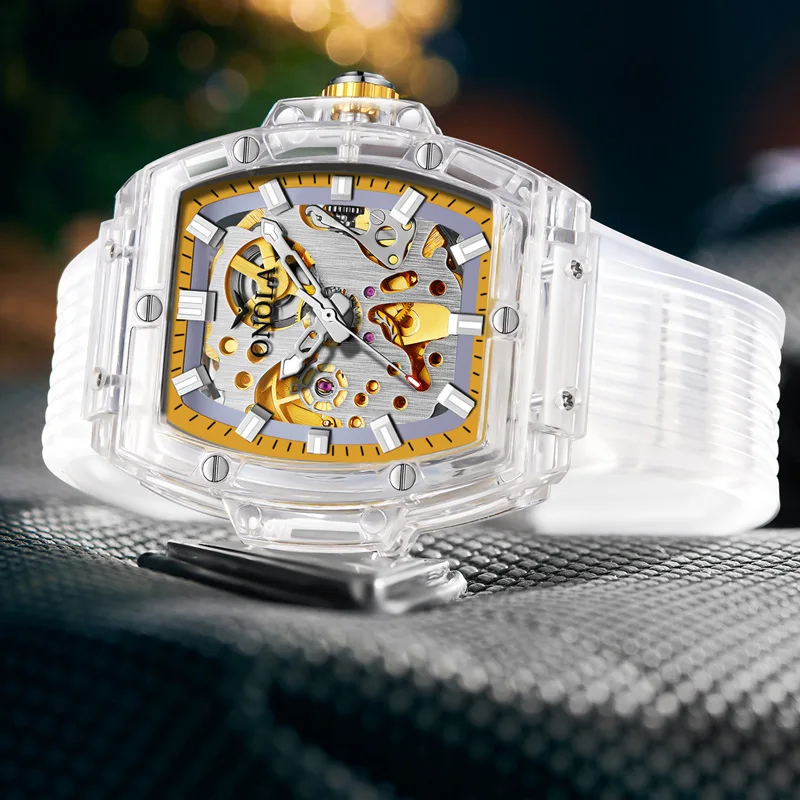
The Enduring Allure: Why Enthusiasts Love Moonphase Watches
The persistent appeal of moonphase watches goes beyond their technical ingenuity—it speaks to something deeper in the human experience.
In our modern world of digital immediacy, a mechanical moonphase watch offers a tangible connection to ancient rhythms. There’s something profoundly moving about glancing at your wrist and seeing the same lunar phase that’s currently suspended in the sky above, all powered by gears and springs rather than batteries and code.
Watch enthusiasts often describe their moonphase timepieces as conversation pieces. Unlike chronographs that measure fleeting seconds or GMT functions that track human-defined time zones, the moonphase tracks something universal and eternal. It reminds us that despite our busy schedules and digital calendars, we remain connected to celestial cycles that have governed life on Earth for millennia.
For collectors, a moonphase watch often represents a milestone acquisition—a piece that demonstrates both the watchmaker’s technical prowess and artistic sensitivity. The complication occupies a sweet spot between everyday practicality and horological artistry, similar to how day-date vs triple calendar watches balance functionality with sophistication.
Perhaps most importantly, moonphase watches remind us to look up occasionally. In a world where our attention is increasingly focused downward at screens, these timepieces encourage us to reconnect with the night sky and the natural rhythms that have fascinated humanity throughout history.
Frequently Asked Questions About Moonphase Watches
How accurate are moonphase watches?
Standard moonphase mechanisms accumulate an error of one day every 2.5 years, while high-precision astronomical moonphases may only require adjustment once every 122 years or more.
Do I need to adjust my moonphase watch monthly?
No, even basic moonphase watches track the actual 29.53-day lunar cycle, not calendar months, so no monthly adjustment is needed if the watch keeps running.
What happens if my moonphase watch stops?
You’ll need to reset the moonphase display using a current lunar calendar or online resource when you restart the watch.
Are moonphase watches more fragile than regular watches?
While they contain additional components, properly manufactured moonphase complications are designed for regular use and aren’t inherently more fragile than other mechanical watches.
Can the moonphase complication be damaged by improper setting?
Yes, many moonphase watches should not be adjusted during the hours when the date mechanism is engaging (typically between 8 PM and 2 AM). Always consult your watch manual.
Do quartz watches offer moonphase complications?
Yes, some quartz watches feature moonphase displays, though mechanical versions are generally more prized by enthusiasts for their traditional craftsmanship.
Are moonphase watches worth the premium over standard watches?
For those who appreciate mechanical ingenuity, historical connection, and celestial beauty, the premium represents value beyond mere timekeeping—it’s an investment in horological art.

